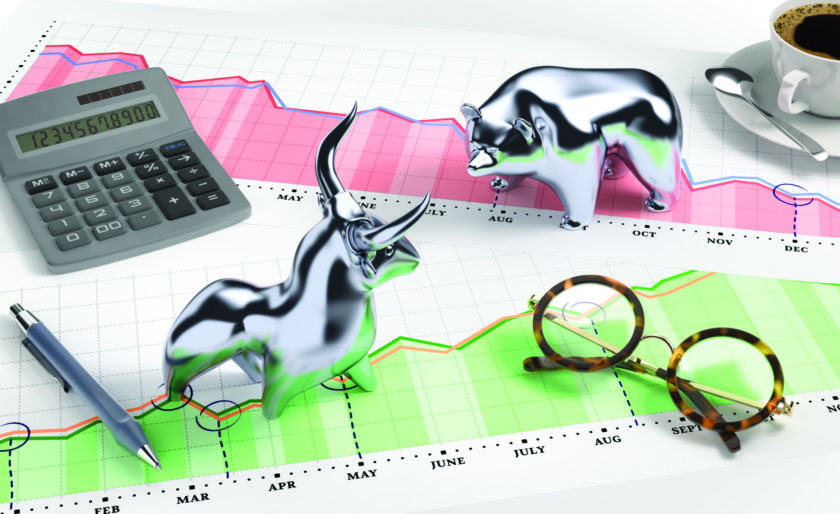Structured products can provide for an alternative investment strategy and thereby a means of diversification within an investment portfolio, offering growth or income and protection of investors’ capital to set levels in market downturns. The following overview is provided by StructuredProductReview.com
Knowing what to expect from an investment is a fundamental part of what makes an investor happy. People don’t like to be shocked, especially when it comes to their money.
Some argue that returns from passive investments are more predictable, as they are reliant upon the movement of an underlying asset, usually an index, rather than relying upon an active manager’s judgement.
A structured product is a type of passive investment, but differs from traditional investments such as index funds, because derivatives provide the exposure to the underlying asset. Being structured this way, they can offer geared exposure to this asset, enabling them to outstrip the returns of traditional passive investments.
Where the underlying asset is a capital only index such as the FTSE 100, the dividend income that would ordinarily be achieved if the investment was made into the underlying shares is absorbed into the make-up of the product.
We define a structured product as, ‘An investment backed by a significant counterparty (or counterparties) where the returns are defined by reference to a defined underlying measurement (such as the FTSE 100) and delivered at a defined date (or dates)’.
The key thing to remember here is defined outcomes, which are stated in the product literature or available through comparison sites, such as StructuredProductReview.com, and let you know exactly what to expect given pre-set market conditions, which makes things easier when building a portfolio and performance expectations.
Structured products are designed to be held to maturity but that’s not to say they can’t be sold early. However, a number of factors mean that the value realised on early surrender will not necessarily reflect the movement of the relevant underlying asset to which the product is linked.
Behind every structured product is a counterparty – a major financial institution backing the loan note behind the product and like any loan, there is a risk that the borrower may fall into insolvency. This is the counterparty risk and is best assessed through looking at the ratings of financial institutions supplied by the major credit ratings agencies, such as Standard & Poor’s, Moody’s and Fitch.
Exposure to structured products can be achieved by investing in individual plans or via a fund. Around 84% of plans in the current market are linked solely to the FTSE 100 index. Ten per cent are linked to the FTSE 100 and the EUROSTOXX 50, while the rest are linked to other indices.
As to structured product funds, the market now consists of five actively managed and one passively managed fund. These all have varying strategies around the theme.
Different Structured Product types
Structured deposits: These are essentially a fixed term deposit account, but instead of the interest being earned at a set or variable rate, returns are dependent upon the performance of the underlying asset, such as the FTSE 100 index.
Like a deposit account, these usually offer the same eligibility of recourse to Financial Services Compensation Scheme in the event of a counterparty default during the investment term. UK eligible claimants have a right to claim up to £85,000 per individual per institution in such circumstances.
While no investment is completely risk free, structured deposits are designed to return investors’ original capital as a minimum at maturity, regardless of market movements. Capital-at-Risk structured products:These put your capital at risk in return for higher rewards compared to deposits. Nevertheless, many of these products will protect capital unless there is a large fall in the markets. For example, some products will only reduce the capital returned if the FTSE 100 falls by more than 40%. More on barriers later.
As these are structured as loans to a major financial institution, the returns outlined, including the return of capital, are dependent upon the counterparty remaining financially solvent for the full product term.
Different Investment types
Growth: An investment designed to provide growth, which can be a fixed return dependent on underlying asset performance over the investment term, or geared participation in the same performance.
‘Geared participation’ means that an investor potentially receives a gain of a multiple of any rise in the underlying asset, such as 2.5 times the rise in the FTSE 100 albeit subject to a maximum return or ‘cap’.
Income:Income is paid monthly, quarterly or annually from these investments. All pay income gross so you need to be aware of the tax implications. In today’s market, the income payment, as well as the return of capital is usually dependant on the performance of the underlying asset.
Auto-calls / Kick-outs:While the other product types are designed to be held for the full term, auto-calls can mature early. If pre-set conditions are met on a set anniversary, say a year from the product ‘striking’ (i.e. commencing), then the product matures with a pre-determined gain, but if not, it continues to the next anniversary where the criteria are checked again (two years for example). The longer the product takes to mature, the higher the gain unless it reaches the end of the full term and the maturity conditions are not met.
Barriers
All Capital-at-Risk products currently on the market offer some protection to capital against all but the most extreme market conditions, usually 30% or 40% down from the start level of the underlying asset. If the underlying asset breaches the barrier, the loss is usually 1% of capital for every 1% the final level is below the start level.
Most barriers are now only tested at the end of the investment term and are breached if the final level is below the initial level by more than the specified percentage, which will lead to an equivalent reduction in the value of the investment.
Summary
Of course, all these explanations can be expanded into much more detail, but the basics are covered as a starting point.
The fundamental benefit of investing in a structured product is that it does exactly what it says on the ‘tin’. It is important to read and understand the ‘label’ – in other words, the explanation of potential outcomes of the product and the risks.



































